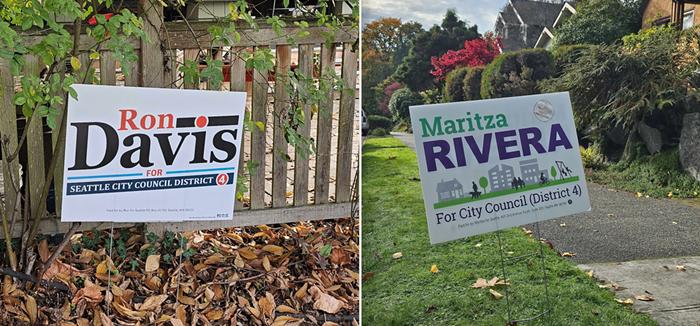
The desired NIMBY takeaway from Heidi's piece in the paper yesterday about condo owners in Pioneer Square blocking the construction of a new building—an eleven-story building that was supposed to go in next to "historic" four-and-five-story buildings—basically amounts to this: Letting developers put "new, taller buildings next to old, shorter buildings" isn't something we've ever done around here and it's not something we can start doing now. Scale, people, scale! If we do allow it to happen, why, we "might as well tear it all down," because taller buildings going up next to smaller buildings are "mushroom clouds," the destroyer of urban worlds.
[eye roll emoji here] Like Heidi said in her piece:
[Areas] of the city already zoned for more density—areas like downtown and Pioneer Square—will have to accept bigger buildings and more residents. And that, inevitably, will mean new, taller buildings next to old, shorter buildings. That inconsistency in height isn't an unusual sight in many cities all over America or even in other Seattle neighborhoods.
See photo above.
But! These Pioneer Square condo owners—who have no qualms about driving up the cost of housing for people who don't already own apartments in Pioneer Square—say they aren't opposed to new development in their neighborhood or to more people moving in:
The Adens insist they aren't NIMBYs—they aren't concerned about parking, traffic, transients—and would gladly welcome 200 new apartments next door if the building looked different. At the maximum-allowed height, though, it's hard to imagine what they might be willing to accept. "Maybe a creative architect will [design] a tower and they'll have a lower building and visually it will look whimsical and charming and it'll be in red brick and everyone will say, 'Oh this is cool. This is a great entrance to the waterway.' You know, maybe," Cindy Aden says.
So... the Adens don't want an eleven story building on their block but they would welcome a much shorter building with the exact same number of units. There's probably only one to cut the number of floors in half while preserving the number of units: construct a five-story building packed with 200 apodments—and when have homeowners in Seattle ever objected to apodments going up next door?


















